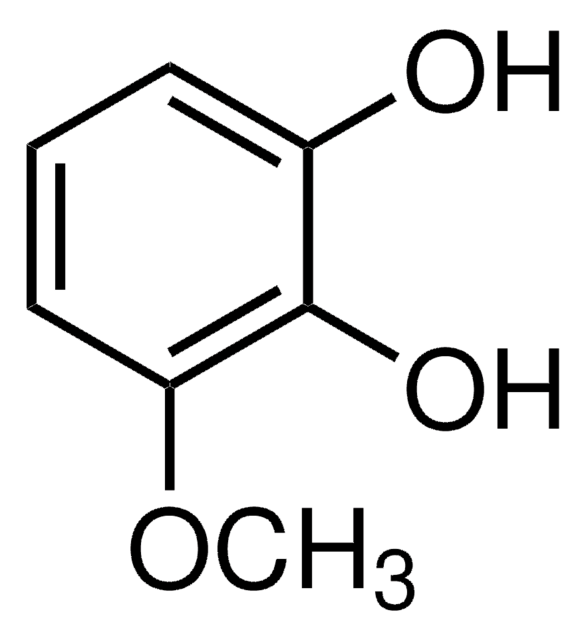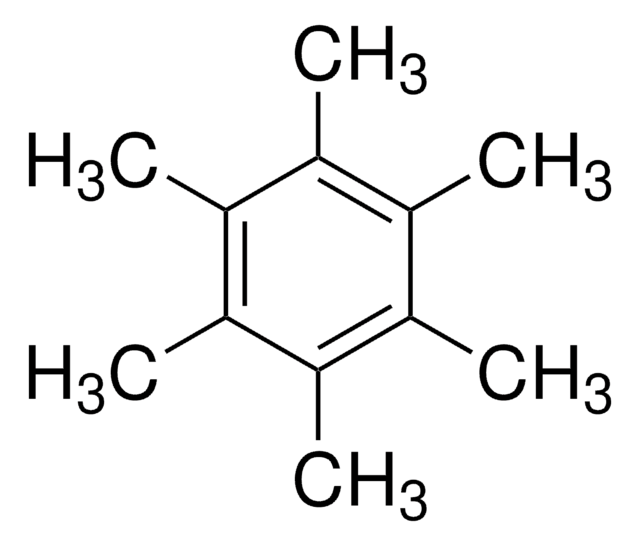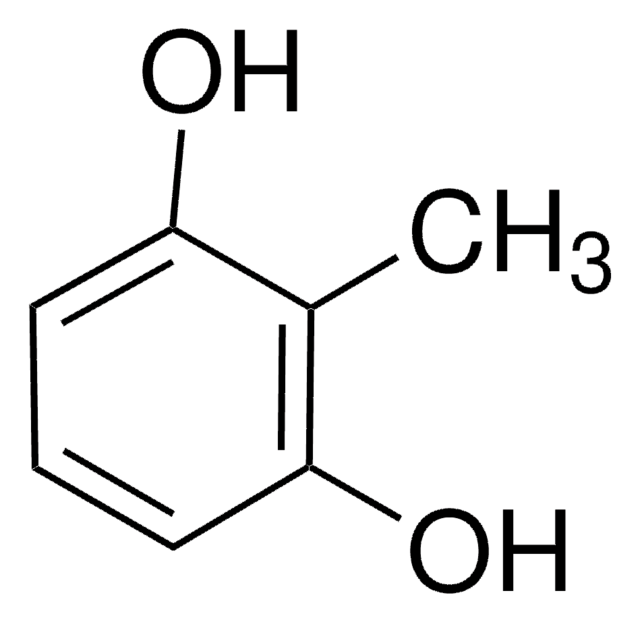M34006
3-Methylcatechol
98%
Synonym(s):
1,2-Dihydroxy-3-methylbenzene, 2,3-Dihydroxytoluene, 2,3-Toluenediol, 2-Hydroxy-3-methylphenol, 2-Hydroxy-6-methylphenol, 3-Methyl-1,2-benzenediol, 3-Methyl-1,2-dihydroxybenzene, 3-Methylpyrocatechol
About This Item
Recommended Products
Quality Level
Assay
98%
bp
241 °C (lit.)
mp
65-68 °C (lit.)
shipped in
wet ice
storage temp.
2-8°C
SMILES string
Cc1cccc(O)c1O
InChI
1S/C7H8O2/c1-5-3-2-4-6(8)7(5)9/h2-4,8-9H,1H3
InChI key
PGSWEKYNAOWQDF-UHFFFAOYSA-N
Related Categories
Signal Word
Warning
Hazard Statements
Precautionary Statements
Hazard Classifications
Acute Tox. 4 Oral - Eye Irrit. 2 - Skin Irrit. 2 - Skin Sens. 1 - STOT SE 3
Target Organs
Respiratory system
Storage Class Code
11 - Combustible Solids
WGK
WGK 3
Flash Point(F)
Not applicable
Flash Point(C)
Not applicable
Personal Protective Equipment
Choose from one of the most recent versions:
Already Own This Product?
Find documentation for the products that you have recently purchased in the Document Library.
Customers Also Viewed
Protocols
Separation of Resorcinol 50 mg/mL; Pyrocatechol; 2-Methylresorcinol; 4-Methylcatechol; 2,5-Dimethylresorcinol 50 mg/mL; 3-Methylcatechol 50 mg/mL; 4-Nitrocatechol 50 mg/mL
Our team of scientists has experience in all areas of research including Life Science, Material Science, Chemical Synthesis, Chromatography, Analytical and many others.
Contact Technical Service











